Every swimming pool needs a pool filter. Without a functioning pool pump and filter, your water will inevitably turn green. However, which pool filter is best: sand, cartridge, or D.E. filter? We often encounter pool owners who are struggling to decide whether to keep their cartridge filter or to switch to sand or D.E.
Each filter has its own pro’s and con’s and each pool owner has his/her own list of priorities, as well. It’s important to keep your personal pool priorities in mind when choosing your filter.
The best pool filter for you is one that aligns best with your pool needs.
Sand Filters
The most traditional type of pool filter is the sand filter. Of the three types of filters, sand filters are the least effective. They filter particles that range from 20-40 microns. Sand filters use sand to filter dirt and organisms from your pool water. Once the debris is at capacity or full, the pressure inside the filter increases.
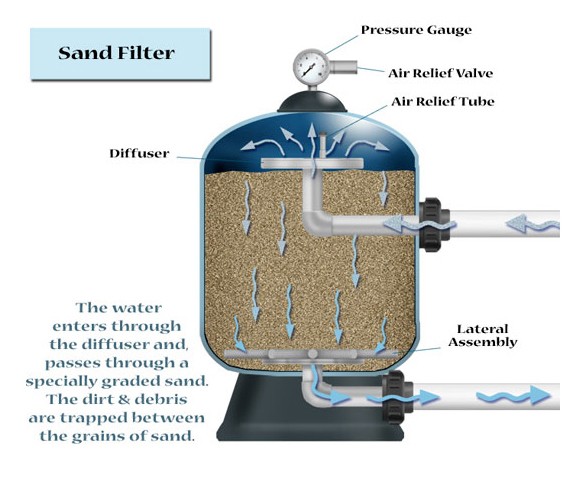 This is an indication that you need to backwash the filter. In short, backwashing is simply running the water inside the filter in reverse direction. With the help of your multiport valve, you can easily switch valve positions from filter to backwash. However, be wary because backwashing can also create other pool-related issues.
This is an indication that you need to backwash the filter. In short, backwashing is simply running the water inside the filter in reverse direction. With the help of your multiport valve, you can easily switch valve positions from filter to backwash. However, be wary because backwashing can also create other pool-related issues.
Before purchasing a sand filter, there are a few things you should keep in mind. First, if you continually backwash your pool, you can disrupt your water chemistry and affect the water levels. After backwashing your pool, you might find yourself rebalancing and refilling your pool. As a result, you spend more money on chemicals and water. Not to mention, you also have to figure out where you are backwashing the water.
You also need to purchase a valve to operate a sand filter. In many cases, the valve will come with the filter. However, that is not always the case. Make sure that you double- check the contents of the filter you want to purchase.
Pros
- Typically, the most compact and affordable
- Minimal maintenance
- Easy to clean (backwash)
- Straightforward operation
- Replace the sand every 5 to 7 years
Cons
- Lower filter ability compared to cartridge and D.E. filters
- Constant backwashing can throw off your water balance
- Higher spending costs on chemicals and water
- Need to determine where you will backwash the water to
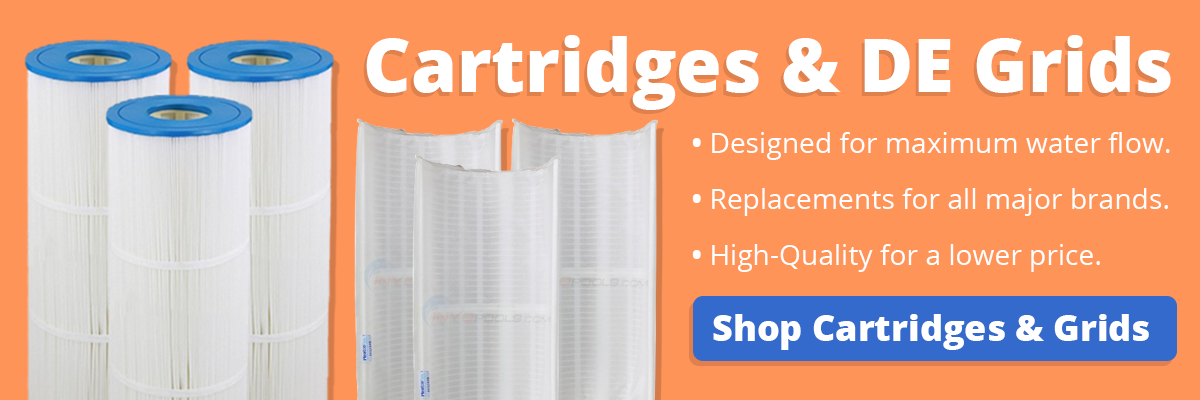
Cartridge Filters
The second type of pool filter is the cartridge filter. Cartridge filters take advantage of pleated cartridges by maximizing the square footage of the filter. The larger the surface area, the more dirt particles you can filter out. Cartridge filters can capture debris as small as 10-15 microns. In terms of efficiency, cartridge filters fall in the middle. 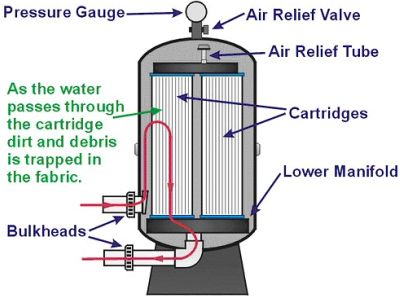 However, they are the easiest to maintain.
However, they are the easiest to maintain.
When the cartridges are dirty or the pressure in your filter rises, it is time to clean them. Depending on the water chemistry, most pool owners clean their cartridges every six months. Cleaning is as easy as using a garden hose to rinse them off. There is no need to backwash a cartridge filter.
Cartridge filters work best at slow flow rates. An overly-sized pool pump has the potential to push the water straight through the cartridge filter and bypass the filtering stage altogether. It is important not to oversize your pool pump, especially when using cartridge filters. However, this also makes cartridge filters more efficient. Cartridge filters utilize and waste less water. Unlike sand filters, using a cartridge filter saves you money on chemicals and water.
Pros
- Low maintenance
- Easy to clean and replace filter cartridges
- The easiest type of filter to install
Cons
- Heavy algal build-up can potentially clog the cartridge. You will need to rinse the cartridge more frequently.
- Depending on the make and model, the price of a replacement cartridge can be high
- Works best with slow flow rates
Diatomaceous Earth (D.E.) Filter
If you are looking for the best way to filter your pool, D.E. filters are the way to go. Although they are most similar to sand filters, the approach to filtering is much different. Diatomaceous Earth, or D.E., filters use fossilized remains of diatoms to filter the pool. They collect particles and debris as small as 2-5 microns. Of the three types, a D.E. filter provides the most thorough cleaning.
D.E. powder coats the filter grids and allows water to pass through, trapping the dirt to one side. However, like sand filters, you clean D.E. filters by backwashing. Like most filters, you can monitor your pressure gauge to determine when your filter needs backwashing.
In addition to backwashing, D.E. filters require pool owners to clean the filter elements routinely . You can remove the grids and hose them down with a standard water hose. You can also soak your grids, which removes all of the dirt, oils, minerals, and stains from the filter fabric. This is one of the reasons why D.E. filters require the most maintenance.
Pros
- Best filtration ability
- Can go a few months without backwashing
- Grids can last several years if properly cared for
Cons
- You must add D.E. media to your grids after every backwash
- Higher costs related to maintenance
- Disassembling the filter grids can be time-consuming
- D.E. is a known carcinogen and you should refrain from inhaling it
- Like sand filters, you also need a backwash valve to operate the filter

Poolside Chat: Should You Switch From a D.E. Filter to a Sand Filter?
Poolside Chat is INYO Pools’ You Tube show where hosts Matt and Rob answer pool-related questions submitted by pool owners across the country. In a recent episode, Matt and Rob tackle whether pool owners should switch from a D.E. filter to a sand filter.
Watch the video below to hear some of the key points to keep in mind if you find yourself switching pool filter types.
Which Pool Filter Is Best?
Choosing a pool filter is an important decision for your pool. However, at the end of the day, you need to pick a filter that caters to your pool and personal needs. The filter that a pool owner in Florida chooses may not be the best decision for a pool of the same size in New York.
Before choosing your new pool filter, consider factors such as initial costs, maintenance routines, maintenance costs, costs associated with repairs, and the ease of operation.
If you are looking for the absolute best filtering option, not considering maintenance routines and costs, we’d recommend a D.E. filter. However, if you want something more economical and budget-friendly, you might want to consider a sand filter.
For more information, check out our video below on how to select an inground pool filter.

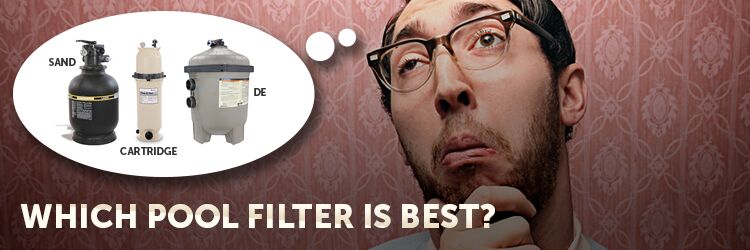

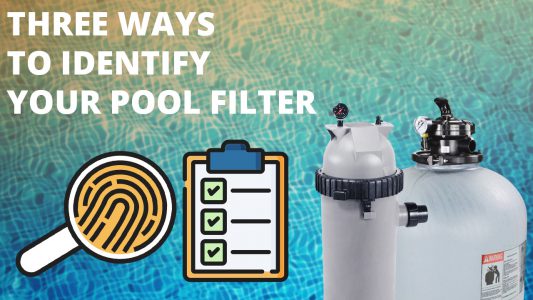
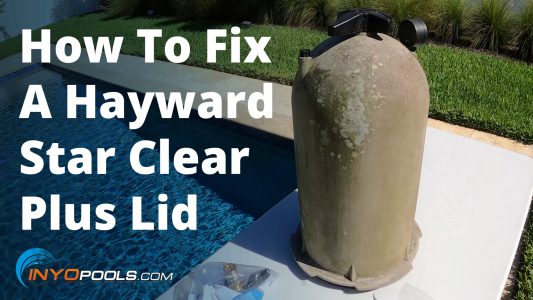
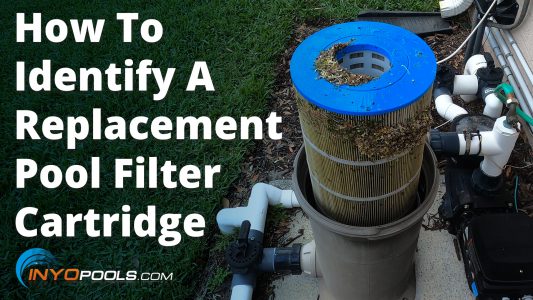
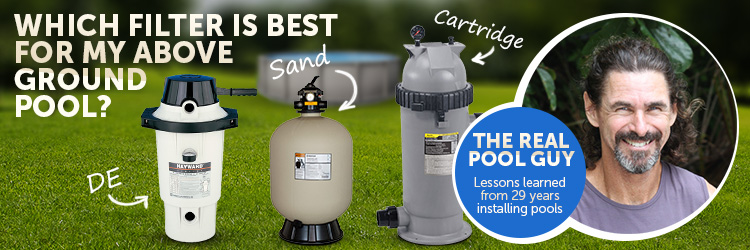






HI,
I am trying to find an alternative water filtration for my plant nursery. I need to remove rust from my well water. I have heard of pools being supported by well water and am hoping I might be able to use a pool filter process due to the lower cost. My required flow is 15 gallon a minute, utilizing about 6500 gallons a day
Is this even a consideration?
Excellent question, but I do not know. We’re a company that specializes in repairing and maintaining pool/spa equipment. I don’t know a plant nursery’s full spectrum of water chemistry requirements.
I had a DE filter and when it ages out, I switched to a cartridge filter. Wanted to avoid maintenance. Huge mistake! Cartridge filters require cleaning at least monthly. Pool water is noticeably not as clear as with the DE filter. Vacuum does not work as well unless you put a freshly cleaned cartridge in. All in all, I have only had my cartridge filter 2 years, but am ditching it and going back to DE.
Interesting experience. When you made the switch to a cartridge, how did you size it? Did you go with a single or four cartridge system? Going cartridge is not going to remove all need to clean the filter; no matter the kind it is, you are going to have to clean the filter.
Look at it this way; if you had a 48 square foot DE filter and replaced it with a 90-foot single cartridge system, you will only go about twice as long between cleanings. If you cleaned your DE filter every two weeks, then you would go about a month before cleaning the cartridge. A month before single cartridge cleanings is normal.
If you want to lessen your cleanings per season, a four cartridge system is the way to go. The smaller filters start about 240 square feet, then range up to 520. if you want only to clean your filter once or twice a year, you need a four-cartridge model.
can you had D.E. to a single or multi cartridge filter?
You can add a dusting of DE powder to a cartridge filter. I’ve heard tell that it slightly boosts the efficacy of the cartridge’s filter quality. I don’t think there have been any real studies as to its effects on the water or the long-term effects on the durability of the cartridge material.
Agree 1,000 times again. Never had algae with DE, with cartridges, I have algae every 2 weeks! I hate cartridges!!!!!!! And so expensive! DE is so cheap!!!
I have a large 4 paper cartridge filter tank, but I converted my pool from chlorine etc. to a natural pond with fish, plants, turtles etc. So at times i get an algal bloom which means the filters load up pretty fast. I got a 1300 PSI electric power washer to speed up the job. I alternate 3 sets of cartridges, and can clean a filthy heavily loaded cartridge in about 6 minutes with my Sun Joe 1300, narrow fan spray The pressure washer uses WAY less water than a hose and one set of pleatco filters is over 4 years old. No damage from the washer. If you want to save water and clean cartridges FAST, spend $90 on an electric power washer.
which filter uses the least water during the monthly maintenance, replacement water is a problem
The cartridge filter uses the least amount of water because you do not have to backwash it to clean it. To clean a cartridge, you will need to hose it off, but the amount used is a fraction of what is wasted when you have to backwash and rinse a DE or sand filter.
I’m sure it would be the cartridge filter but I think they’re the least effective type of pool filter.
Hello,
I live in Ca and am looking to install a pool with no more than 15,000 gallon capacity. After reading feel like a cartridge filter would be best for my needs (though I could be mistaken). I would love any recommendations on filter size (and brand if possible) along with the pump size (and brand as well) you feel would be appropriate. Any information would be helpful! Thanks so much in advance!! Dave
How did it go do u like the cartridge system?
All of my pool equipment needs to be replaced after lightning struck a tree next to the filter. I have a large Gunite pool. Looking for recommendations as to what brand of filter/ salt chlorinator to purchase since I need the entire package? Current equipment is Jandy and my current system has been discontinued.
If you want a recommendation for replacement equipment, please list the model numbers of the equipment you currently have. This information will give us an idea of the equipment parameters needed for your pool.
The term large gunite pool is 20k gallons in one person’s mind, while 40k gallons to the next person. We need more to go off of.
Hello!
We have a 20×40 in-ground pool. It’s a salt pool with a liner. 37k gallons. We live in Buffalo and open the pool May 1 and close in October…(when the snow starts) The pool was installed with a Single cartridge filter which I now know is ridiculous. It burned 2 pumps and ran 20+psi from day 1. I’m upgrading filters…what’s my best solution? Sand isn’t an option.
What size is your pump (horsepower)? How big (sq. ft. size ) is the filter cartridge? What is the dynamic head size?
I have the same size pool; also in Buffalo, NY
Get a four cartridge system, preferably with 420 square feet or higher. There is not much difference between the major brands’ four cartridge systems so I wouldn’t get caught up too much on the model.
Las bombas se queman cuando, las mantiene prendido mucho tiempo, las piscinas debería estar prendidas entre 8 a 10 horas, para dar descansó a las bombas. Eso es también darle mantenimiento a,la bomba ,to tengo mi bomba mas de 20años.
Translation: “The pumps burn when you keep them on for a long time, the pools should be on for 8 to 10 hours, to give the pumps a rest. That is also to give maintenance to the pump, I have had my pump for more than 20 years.”
What you state is not wholly correct. Pool pump motors are listed as “Continuous Duty,” which means they can operate 24/7 without exceeding their thermal limitations. So, if you have the motor in the right conditions, e.g., not baking in the hot summer sun, it should be ok to operate 24/7.
Other variables that cause the motor’s lifespan to shorten are bad circuitry and the pump’s plumbing. The motor requires a stable voltage supply within 10 percent of its voltage setting. A voltage supply outside of that range can degrade components of the motor like its capacitor. If your motor is popping or causing capacitors to fail repeatedly, an erratic voltage supply may be the cause. A motor set to accept 120V has an acceptable range of 108V to 132V. Use a multimeter to test the voltage supply to your motor.
If your pump’s plumbing is clogged or experiencing an air leak that lowers the pump flow rate, the motor may run light. A light loading motor means it does not have enough resistance pushing against the spinning impeller, causing the motor to over-rev its listed 3450 RPM limitation. Light loading can cause overheating, which damages the motor. How To Use a Multimeter to Test a Pool Pump Motor – Voltage
And lastly, there is the old saying, “they don’t make them like they used to.” This is very true. Motor components aren’t built as robustly as they once were. Capacitors that once were rated for 440V have been stepped down to 370 volts, making them more susceptible to failure.
Ok,
I have had all three filter on three different pools. Here’s my take after 30 years.
Like the article above sand filters have the pros and cons and agree with everything!
One guy wrote in about the glass sand! Lol sand is glass. Well, I tried the Z- bright sand that is supposed to be better.. guess what it was for a month and kept building up pressure and water volume down to the point I was backing washing every week just to disrupt the sand for better flow. Nope!
D.E. I totally agree with the article! Still pretty nice polished water.
Now for my trick!, I run cartridge filters. When new or after you clean them I add about 5 cups of DE right after start up. This is on a four cartridge filter. This is just enough DE to polish the water and keep all the dirt from sticking to the filters. Now when I take them out for cleaning they hose right off nice in clean… this method has worked for me for many years! DE is cheep and it catches all the small stuff.. my filter only runs about 2 1/2 psi and when it hits 10-12 psi clean the filters. Also my pump is full solar, no grid! About 8 hrs. A day pump for free.. of coarse I live in Arizona with 350 days of sun..
😎😎
Hi Steve.
My name is Ed
I live in Peoria. I have had the problem of sand getting into pool while pump is on. I replaced everything inside the Pentair Triton 2 T100, orTR100. Still sleeping into pool. Pool was here when I purchased 4 years ago. I would like to know what equipment you have. Reviews on the filter I have are very good, yet I can’t figure out why this happens. I did have a pool guy “Happy Jack” out when I had all the sand out. Had no idea why as well. I don’t mind paying for quality. It originally had a valve type plunger for back washing. I put a lever valve on it. Same thing.
We have never owned a pool and are looking into both sand and filter pumps. We dont want to spend tons on chemicals each summer or fidget with chemical balancing, which I’ve heard many people do with sand filters. I’m now leaning towards cartridge now. Live in Missouri…weather is unpredictable. Should I go with large size filter?
The larger the filter the longer you can go in between cleanings. If you want to lower maintenance needs, a larger filter is better.
Owned pool for 30 years. DE is the ONLY way to go, period.
I’ve heard that some towns are prohibiting DE as it is a carcinogen plus people get pissed seeing white powder in the street. An extreme measure by some towns is requiring a holding tank. Anyone here about this?
The International Agency for Research on Cancer (IARC) classified Diatomaceous Earth as a “Group 3 Carcinogen” but look at what that definition actually means:
Group 3: “The agent (mixture) is unclassifiable as to carcinogenicity in humans. ”
“This category is used most commonly for agents, mixtures, and exposure circumstances for which the evidence of carcinogenicity is inadequate in humans and inadequate or limited in experimental animals. Exceptionally, agents (mixtures) for which the evidence of carcinogenicity is inadequate in humans but sufficient in experimental animals may be placed in this category when there is strong evidence that the mechanism of carcinogenicity in experimental animals does not operate in humans.
Agents, mixtures and exposure circumstances that do not fall into any other group are also placed in this category.”
Examples include anthracene, caffeine and fluorescent lighting.
Have you tried running the filter without the sand for a week or two and see if you get any sand in the pool. It may be coming from a different source.
I don’t suggest that.
Great Idea !! I will give it a try.
You put de into the filter before closing?
Good recommendation- where to you put the DE to go they your cartridge filters? Into the pool or near the filter ?
Put DE In skimmer slowly. It will get pulled to cartridge and coat it.
This is correct. To get a visual on how to do this, check out this guide: How To Add DE Filter Powder
Steve, Could you comment on what type of solar pump or system you have, any information would be helpful. Your ideas using the cartridge w/ DE is excellent and makes sense. Thanks, Craig
I live in mesa az and I’m about to change from sand to cartridge. When you say you add 5 cups DE after startup. Where are you adding? I assume once filters are new or cleaned and you startup your not adding to cartridge housing. Never owned cartridge filter before so I want to be clear.
Check out this guide – How To Add DE Filter Powder
Five 1pound measuring cups or 5 standard measuring cups?
An excerpt from our How Much DE to Add? article:
so Fns plus or Hayward c7030
Hi,
Thank you for the very informative article.
I need to replace my filter (currently Pentair DE FNS 4820), and I am thinking of switching to cartridge filter as I have SWG and Solar Heater, so I want to reduce my Head Loss.
However, due to mesh grid cover, and landscaping, my pool is always dirty in the spring, so I need to clean my current filter (Pentair FNS 4820) at least twice, and I hate dealing with DE.
That’s why I am thinking of going with the big cartridge (over 500 sqft), but I was told by my Pool guy, that I would have to clean them even more frequently than the DE filter. Does this sound right?
Which filter would need less cleaning Pentair Quad DE 100, or (Pentair Clean & Clear 530 Sq feet ?
My pool is 42,000 gallons.
Thanks
The tech who told you that the four cartridge system would require more cleaning/maintenance then the DE was incorrect. Users of the large cartridge filters can expect to clean their filter may twice a year, if it sized correctly. Just compare the square footages of the filters, 100 square feet for the Quad100 and 530 sq ft for the Clean and Clear; which one is going to fill up faster if treating the same water. Look at it this way, if those square footages were sizes of closets, which one would get cluttered and clogged quicker if you were shoving the same amount of junk, at the same rate into them?
I went from DE to Haywood filter. Once I got the pool stabilized With the DE it kept the pool crystal clear but it was a pain in the process. The filter is massively easier. The problem lies in that My pool gets cloudy before I realize the filter needs cleaning. The filter is quite easy to clean though. I have a garbage can just big enough to submerge the filter. First I rise it off with the hose attachment meant for cleaning filters. Then I soak it in water with dawn dish detergent pulling it up and down in the water and then leaving it overnight. If you want to soak it in muriatic acid and water it will clean it better but it is more costly and less safe. I have two filters and I would suggest you should always have two good filters. Filter last about two years depending on how dirty your pool gets.
We have a couple of guides that show how to keep your filter clean and running smoothly: How To Clean A Pool Filter Cartridge or How To Chemically Clean a Pool Cartridge Filter
I look forward to INYO”S response to Dave’s commentl
One additional comment would be helpful. The cleaning of a cartridge filter can be a bit prohibitive in respect to costl If you plan to use a pool cleaning company be sure and ask what they will charge for the cleaning of the cartridge(s). Also determine the cost of replacement of the cartridges.
Do not sand filters now use a glass medium which makes them a better filter than you state in this blog? Glass has a tighter turbid catch, with an ability to filter down to 9 microns. Some brand claims go as low as 3 microns. This DE-quality filtration can be achieved without chloramine-producing flocculants and shock treatments, which is one reason glass is most commonly found at indoor pools where air quality is a top concern. I do believe your blog is way outdated when it comes to sand type filters. Then can be as good as DE type and certainly better than filter types!
No way not even close to DE, I had one of these fancy sand filter cans. Used the premium sand, it still stinks compared to DE. Ran the same setup on DE, same square foot cleaning capacity and same variable speed motor. The sand setup couldn’t keep the water clear without double the run time and more bullshit chemicals that you don’t need to use with DE. Now the DE setup only thing the water needed to keep it balanced was Chlorine, even heavy rain didn’t throw it off. Both years the water was shocked one per week with liquid chlorine. Sand is still light years away and sub par to DE
I have used all three filter medias for the last 30 years. It depends on the environment you live in.
1. Cartridge filters work best in residential areas and with low flow water through the filter media particle size 10-15microns. If you use them in a rural area where its dusty you’ll be cleaning filters often.
2 DE is great your local drinking water is filtered through DE particle size 3-5 microns. That said again living out in the country you’ll be hard pressed to keep the system clean with backwashing it doesn’t take long to jump that 20 psi to backwash.
3. Sand although sand may not filter down as small 20 to 30 mircon but the new Zeolite san which is 100% natural has been tested down to 8-10 microns. Also using a phosphate neutralizer will help keep the algae away. Algae eats phosphates take away their food and they die.
Presently I am switching over to sand filter using Zeolite
I have seen that done and it does not work as good as DE actually One of my customers tried the glass media in their sand filter twice (crappy job removing sand) switched to glass had issues, cleaned it out again and all parts were good filled it up again and used for 6 months still not happy so they switched to a cartridge.
Why was glass a pain to remove from the filter? Also, have you come across any other sand alternatives on your jobs you care to share your experience with?
My $.02 cents, Sand filters now can use Zeo-sand. ZeoSand Natural ZeoLite Filter Media 25 lb Bag is a 100% natural zeolite and highly efficient filter media that is proven for use as a sand replacement. I believe it also filters down to almost 5 microns. Which is awesome.
Thank you for giving me an alternative. I am having a pool 31ft by 16 by 52. It’s 13,798 gallons of water.
It comes with a 2,200 gallon (8,328) L/hr sand filter pump.
I would like to try the zeroSand.
The bags come 25 pounds of sand per bag. Can you tell me how many bags to buy?
My first time
Thank you in advance
You’ll need to check the sand requirements for your specific filter on its tank sticker or the manual. Then refer to the sand alternative product’s packaging for the correct dosage corresponding to the filter model’s sand requirement. If the ZeoSand states the correct dosage is 50% of the filter’s listed sand requirement; a filter requiring 100 pounds of sand, then you would need two 25-pound bags of ZeoSand.